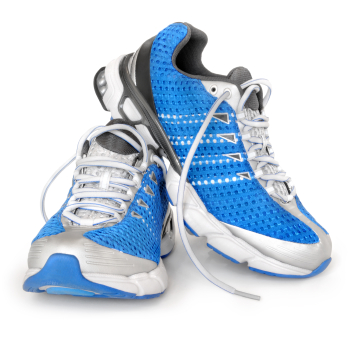A majority of kids wear shoes that are too small which put them at risk for developing serious foot deformities such as bunions, says a study by Swiss researchers presented to a meeting of the American Academy of Orthopaedic Surgeons (AAOS).

The study, based on measurements of the feet of nearly 250 boys and girls from age 5 to age 10 and their indoor and outdoor footwear, found that most of the children tested were wearing the wrong size shoes:
- 52.8 percent of outdoor shoes were too small while 13.3 percent were too big
- 61.6 percent of the children's indoor shoes/slippers were too small, while 10.2 percent were too big.
- 90.2 percent of outdoor shoes were smaller than the size marked on the shoe
- 97.6 percent of indoor shoes/slippers were smaller than the stated size
"The most striking finding in our study was that more than 90 percent of both outdoor and indoor shoes/slippers worn by the children were too small," says Norman Espinosa, M.D, an orthopaedic surgeon at the University of Zürich Balgrist in Switzerland. "Interestingly, the shoe sizes given by the manufacturers almost never matched with the true sizes measured by our group. We truly did not expect such a large percentage of incorrectly declared shoe sizes," he said.
Additionally, Dr. Espinosa notes, the study found a higher prevalence among the children studied of a foot deformity called hallux valgus (which occurs when the big toe begins to angle sideways toward the second toe, causing a swollen and painful bump or bunion on the side of the foot just below the big toe) than reported in previous studies. Hallux valgus angles are considered normal when equal to or less than 15 degrees; the results showed that 3.3 percent of the children's feet had an angle of more than 15 degrees, while 26.1 percent had an angle of 10 degrees to 15 degrees.
Parental education needed to avoid juvenile foot deformities
The study results, Dr. Espinosa said, should lead to an increased "focus on parental education to help prevent early onset of juvenile foot deformity."
In particular, he recommends that parents:
- Measure their children's feet every time they purchase new footwear (a special device to measure feet and shoes is recommended; the length of the shoe should exceed the length of the child's foot by at least 10 millimeters; 12 mm is ideal);
- Consider the actual size of the shoe rather than just the number marked on the inside of the shoe or the box; and
- Check every month or so to see if a child's shoes still fit, especially when the child is in a growth spurt. (Remember: many children will often outgrow their shoes well before the shoes are worn out).
Signs that shoes no longer fit
Some of the telltale signs that shoes are too small and no longer fit, says Dr. Espinoza, are the following:
- The greater toe starts to hit the front of the shoe;
- Leather shoes start to bulge on the sides;
- Redness around the foot; or
- Reports of pain (when the child reports pain it should be taken seriously).








